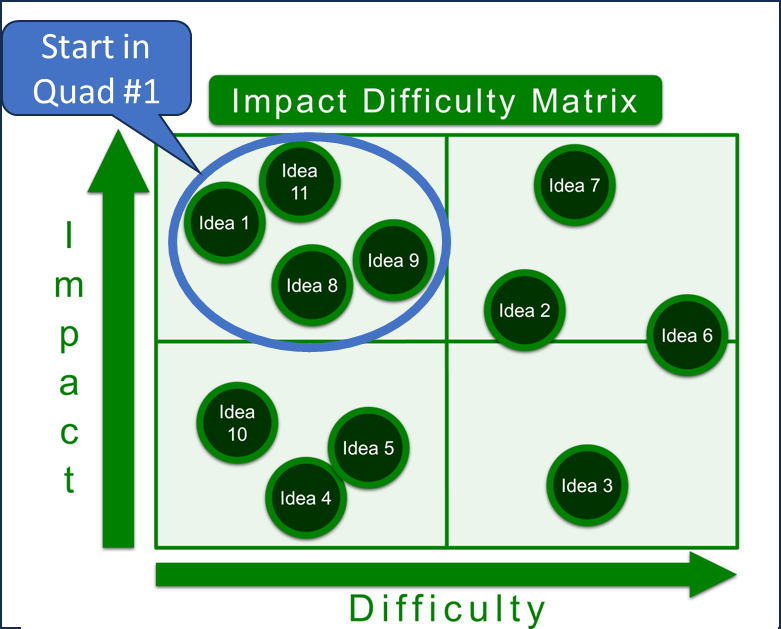Setting Priorities for Your Team
As a leader of a department, team, or company you are expected to set priorities. But what does that really mean? For some, the priority is to hit “budget.” Budget typically refers to a quantitative outcome such as total sales (in $ or Units), total production, profit margin, earnings per share (EPS), safety (e.g. 0 incidents), or compliance (no Notices of Violation). So essentially, the priority is to hit a goal or a set of goals. Goals are very different from plans and priorities. Goals refer to the outcomes we want. Plans are made up of the actions we will take to produce the outcomes. Goals without a plan are just an aspiration that will not be realized. To complete these actions or projects, we need to apply resources (people, equipment, finance). Most organizations have finite resources which limit their ability to resource projects. When we face these limits, we need a method to prioritize among the initiatives to select the 3 to 5 which will be able to support given the resources we have. Matching the initiatives to our resources is critical to successful execution. We see too many organizations set 10 priorities when they only have the resources to complete 5. Why take on more than you can accomplish? There are many explanations, however the two most common I see are:
- Lack of understanding / awareness of the resources required
- Belief that the organization will “rise to the challenge” achieving more by setting more ambitious goals.
In either case, when we take on 10 projects instead of 5, we end up with 10 incomplete projects that generate limited to no benefit for the organization. We don’t accomplish more by starting more, we accomplish what we are able to successfully complete. So how should we set priorities? Begin by understanding the Impact of our initiatives. What is the quantitative benefit the initiative will generate and how does it align to our goals (e.g. is it on our list of goals? Will it help achieve the goal?). Next, assess the relative difficulty of the initiative. This should be measured in time (duration) and resources (# of people; capital $). Third, understand the resources available to us. How much bandwidth does our team have? What is our capital budget? How much time (duration) do we have? Constructing an Impact Difficulty Matrix The last step is an impact-difficulty matrix to support the selection of our initiatives. Here is an example:

Start by addressing the initiatives in the upper left quadrant. These are relatively high in impact and low in difficulty. In other words, we get more benefit while consuming fewer resources. If we have any bandwidth remaining, we may look at the high impact, high difficulty projects. We can also take on some of the low difficulty, lower impact projects to fill in the gaps when we may have unexpected idle time. We can summarize our plan / list of priorities in the following matrix:

You may notice that we have exceeded our contribution vs. plan for our 4 goal areas. The purpose is to ensure we have some buffer in the event any single initiative encounters unexpected headwinds. Ideally, we also want to come in under 100% on resource consumption, but the team was not able to do so in this example. Following this process will ensure we have the resources to accomplish our goals by completing our key initiatives. Remember:
- A goal without a plan is just an aspiration
- If you start more projects than you are able to resource, you will simply end up with more incomplete projects!


